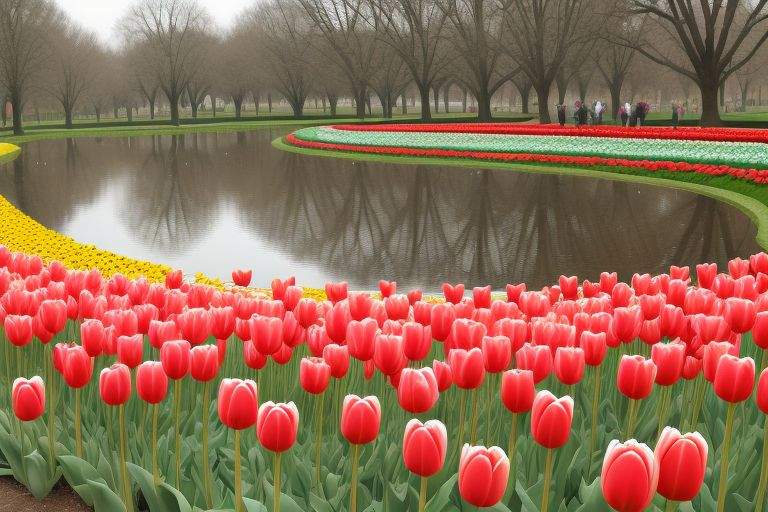
Roses, the quintessential flowers of romance and elegance, have captured the imaginations of people across the globe for centuries. Renowned for their exquisite beauty, intoxicating fragrance, and rich colors, roses are emblematic of a range of human emotions, particularly love and passion. Beyond their aesthetic appeal, roses play a pivotal role in various cultural, historical, and ecological contexts, making them much more than mere ornamental plants. This essay explores the multifaceted significance of roses, delving into their symbolism, cultivation, and cultural importance around the world.
Historical Overview and Symbolism
The history of roses is deeply intertwined with human civilization. Cultivated for over 5,000 years, they have been revered in ancient cultures such as the Egyptians, Greeks, and Romans. The Egyptians associated roses with beauty and love, using them in lavish ceremonies and depictions of goddesses. Similarly, in ancient Greece, roses were linked to Aphrodite, the goddess of love, while the Romans honored them during their festivals and incorporated them into myriad aspects of life, from art to cuisine.
Symbolically, roses encompass diverse meanings depending on their color. The red rose, perhaps the most iconic, represents passionate love and desire, often gifted on romantic occasions such as anniversaries and Valentine’s Day. White roses, on the other hand, signify purity and innocence, frequently used in weddings to adorn bridal bouquets. Yellow roses convey friendship and joy, while pink roses are associated with admiration and gratitude. The language of roses—known as “floriography”—has enabled them to convey complex emotions and sentiments without the necessity for words. This intricate vocabulary enhances their value as heartfelt gifts in various social interactions.
Cultivation and Varieties
In addition to their symbolic value, roses are cultivated for their aesthetic and aromatic qualities. There are over 300 species of roses and countless hybrid varieties, each exhibiting a unique set of characteristics. The most commonly cultivated types include hybrid teas, floribundas, grandifloras, and climbing roses, each chosen for specific attributes such as bloom size, fragrance, and flowering time.
Cultivation practices for roses demand attention and care, as they flourish in environments that provide well-drained soil, ample sunlight, and appropriate watering. Pests and diseases, such as aphids and black spot, pose significant challenges to rose growers, necessitating proactive measures ranging from organic pest control to chemical treatments. Nevertheless, the effort invested in nurturing these delicate plants is rewarded with vibrant blooms that can transform gardens, landscapes, and interiors into breathtaking displays of color and fragrance.
Cultural Significance Across the Globe
The significance of roses transcends their beauty and fragrance, permeating traditions and celebrations around the world. In Western cultures, roses have become an indelible part of romantic customs, often serving as a symbol of devotion and affection. During weddings, roses adorn venues and are included in floral arrangements, creating a visual representation of love. Moreover, the tradition of “passing roses” in various ceremonies reinforces the intimate connection between individuals, highlighting their importance in marking life’s milestones.
In Asian cultures, roses carry different connotations. In China, for instance, roses symbolize wealth and honor. The practice of gifting roses during the Lunar New Year reflects wishes for prosperity in the upcoming year. In contrast, in Middle Eastern cultures, roses are often associated with love and beauty but can also carry connotations of secrecy due to their association with the mystical garden of paradise in literature.
Furthermore, roses play a vital role in literature and art. Renowned poets and artists have drawn inspiration from roses, using them as metaphors for transient beauty and fleeting love. From William Shakespeare’s immortal lines in “Romeo and Juliet” to the poignant reflections of Pablo Neruda, roses serve as a profound symbol that encapsulates the complexity of human emotions. Their presence in art history, showcased in the works of painters such as Vincent van Gogh and Claude Monet, underscores their enduring appeal to human creativity.
Ecological Importance
In addition to their cultural and aesthetic significance, roses are valuable contributors to ecological stability. They are a crucial part of various ecosystems, attracting pollinators such as bees, butterflies, and hummingbirds. These organisms play an indispensable role in the pollination of many plants, thereby maintaining biodiversity and promoting food production. Moreover, roses are utilized in landscape architecture to enhance the environmental quality of urban spaces. Their ability to thrive in diverse conditions allows them to be integral components of gardens and public parks, offering vital green spaces in urban centers.

In recent years, as awareness of environmental conservation has grown, initiatives aimed at cultivating organic roses have gained momentum. Organic rose cultivation emphasizes sustainable practices that minimize chemical inputs, promote soil health, and enhance biodiversity. This shift toward environmentally friendly practices not only contributes to ecological well-being but also addresses consumer demand for organic products that cater to health-conscious individuals.
In conclusion, roses are far more than mere flora; they are profound symbols intricately woven into the fabric of human emotions, cultural practices, and ecological systems. Their historical significance, aesthetic value, and ecological contributions underscore their importance in our lives. Whether presented as a token of love, cultivated for their beauty, or appreciated for their role in the ecosystem, roses embody a timeless connection to nature and humanity’s most cherished sentiments. As we continue to explore and celebrate the myriad dimensions of roses, we affirm their place as an enduring emblem of beauty and resilience in the natural world.









